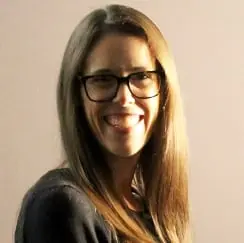 | 1 LU / HSW |
 | 1 LU / HSW |
Room: D137-138
Audience: Facilities Personnel
Call to Action:
DESIGN STRATEGIES to reduce our embodied carbon footprint by using timber and other biogenic building materials, and PLANNING TOOLS to measure the impact and guide our decisions. COLLABORATIVE STRATEGIES for how an interdisciplinary team works to maximize the value of mass timber as a building system, making it an affordable solution for educational clients and learning environments. DESIGN and CONSTRUCTION TECHNIQUES for multistory mass timber learning environments on tight sites in dense urban environments.
Abstract: As cities densify, schools are transforming vertically beyond the traditional one- and two-story conventional model. At the same time, mass timber is a compelling new option to both build taller and more sustainable, connective educational environments. In this presentation, learn how mass timber has been implemented on two Seattle schools: a 3-story full mass timber elementary school and a 4-story hybrid mass timber middle school. The Architect and General Contractor will discuss collaborative strategies used to optimize the design specifically tailored to mass timber, meet limited project budgets, navigate the constraints of building on a tight site, execute the project schedule, and provide learning environments that align to project goals and maximize value for the client and community. Vertical schools pose stringent code challenges, yet mass timber can be designed to easily navigate and often simplify these requirements. Moreover, mass timber can hybridize with traditional steel and concrete construction to offer the unique benefits of each material type. Mass timber not only celebrates the culture of the Pacific Northwest but can reduce embodied carbon impacts. Through the lens of these two schools, discover hot spots in embodied carbon emissions and methods to reduce the global warming impacts of school construction.
Learning Objectives:

Joe, an advocate for biophilic, low carbon school design, is a Seattle architect at Mahlum and author of the book Solid Wood: Mass Timber Architecture, Technology and Design. Solid Wood is the first English language book devoted exclusively to multi-story institutional mass timber buildings. He’s worked on a dozen mass timber projects, including the first installation of U.S. produced CLT, the first use of CLT in a Washington K-12 school, the first acoustic dowel-laminated timber (DLT) school installation in North America, and among the first 3-and 4-story mass timber schools in Washington.

Becky’s work between Boston and Seattle has focused on educational clients and the ways in which our educational environments can act in service to a more sustainable, equitable, and just future. Becky is an Associate Principal at Mahlum and serves as a Project Manager and Team Leader in the K-12 studio. She holds a Master of Architecture from Harvard University Graduate School of Design and is a registered architect in Massachusetts.

With over 20 years of experience, Sam is a seasoned expert in K-12 construction. Sam’s passion lies in helping deliver educational spaces that inspire and empower all students. His expertise in alternative delivery, combined with a bold approach to exploring emerging practices makes him an invaluable asset in delivering innovative and impactful solutions for educational facilities.

Max brings over 15 years of experience constructing complex educational facilities, including over 30 projects. Max’s expertise is bolstered by an exceptional understanding of historical cost data, local market trends and other factors influencing cost. Max’s passion for new and emerging building technologies and his familiarity with the diverse program requirements on K-12 projects enables him to maximize value for end-users by providing accurate and reliable cost feedback at all stages of design.
Design of Educational Facilities
Acts as a resource to the design team in providing ongoing guidance and support to ensure that the emerging and ultimate design aligns with the established community vision, education goals, future programming, written design standards, best/next practices and education policy.